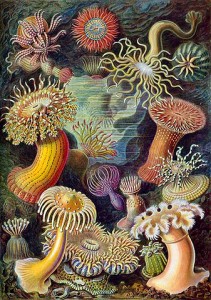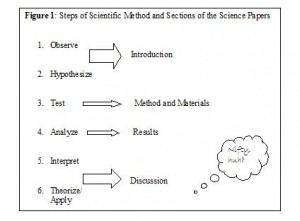Science begins with counting. To understand a phenomenon, a scientist must first describe it; to describe it objectively, [s/he] must first measure it — pg. 19, Siddhartha Mukherjee, MD, Ph.D, The Emperor of All Maladies
 In quantitative studies, the research question is tested using methods that will produce numerical results. In other words, the research design (method) counts stuff. Outcomes (results) are presented statistically, employing tables and figures, and also in sentences such as “Seventy-six percent of Group Y do not believe in Concept X.” Readers are very familiar with this kind of research because it is so strongly associated with the scientific method. Quantitative research reports are written using primarily functional subheadings in the classic “Introduction/Methods/Results/Discussion” (IMRD) form.
In quantitative studies, the research question is tested using methods that will produce numerical results. In other words, the research design (method) counts stuff. Outcomes (results) are presented statistically, employing tables and figures, and also in sentences such as “Seventy-six percent of Group Y do not believe in Concept X.” Readers are very familiar with this kind of research because it is so strongly associated with the scientific method. Quantitative research reports are written using primarily functional subheadings in the classic “Introduction/Methods/Results/Discussion” (IMRD) form.
This is a beautiful thing! Whatever branch of research you work in, you will recognize the basic parts of the research report: they are an idealized form of the scientific method itself. Research reports (what most people mean when they refer to the write-up of “original” — experimental– research) have 4 functional sections.

These are called “functional headings” because each section has its own informational task: specifically, a particular part of the research process it is intended to communicate. The reader cannot guess the content of an “Introduction” or “Methods” based on the label alone — instead, the headings only indicate what part of the research project will be written up in that section.
Each of the functional headings — Introduction, Methods/Materials, Results, Discussion/Conclusion — has a template to guide writing; the templates specify the kind of information that should go in each section and suggest an order for the information, too. Further, the features of scientific prose — subheadings, titles, abstracts, in-text citations, figures, references — direct both reader and writer through the text. Employing these features helps the writer communicate clearly, concisely, and comprehensibly. When the reader encounters the information in the expected order, the writer’s credibility increases, as well.
For each functional section, we provide a brief explanation of template, examples from the published literature, notes on style and variation, and an outline to help writers draft. You can navigate using the links from the list above or using the prompts at the bottom of the page.